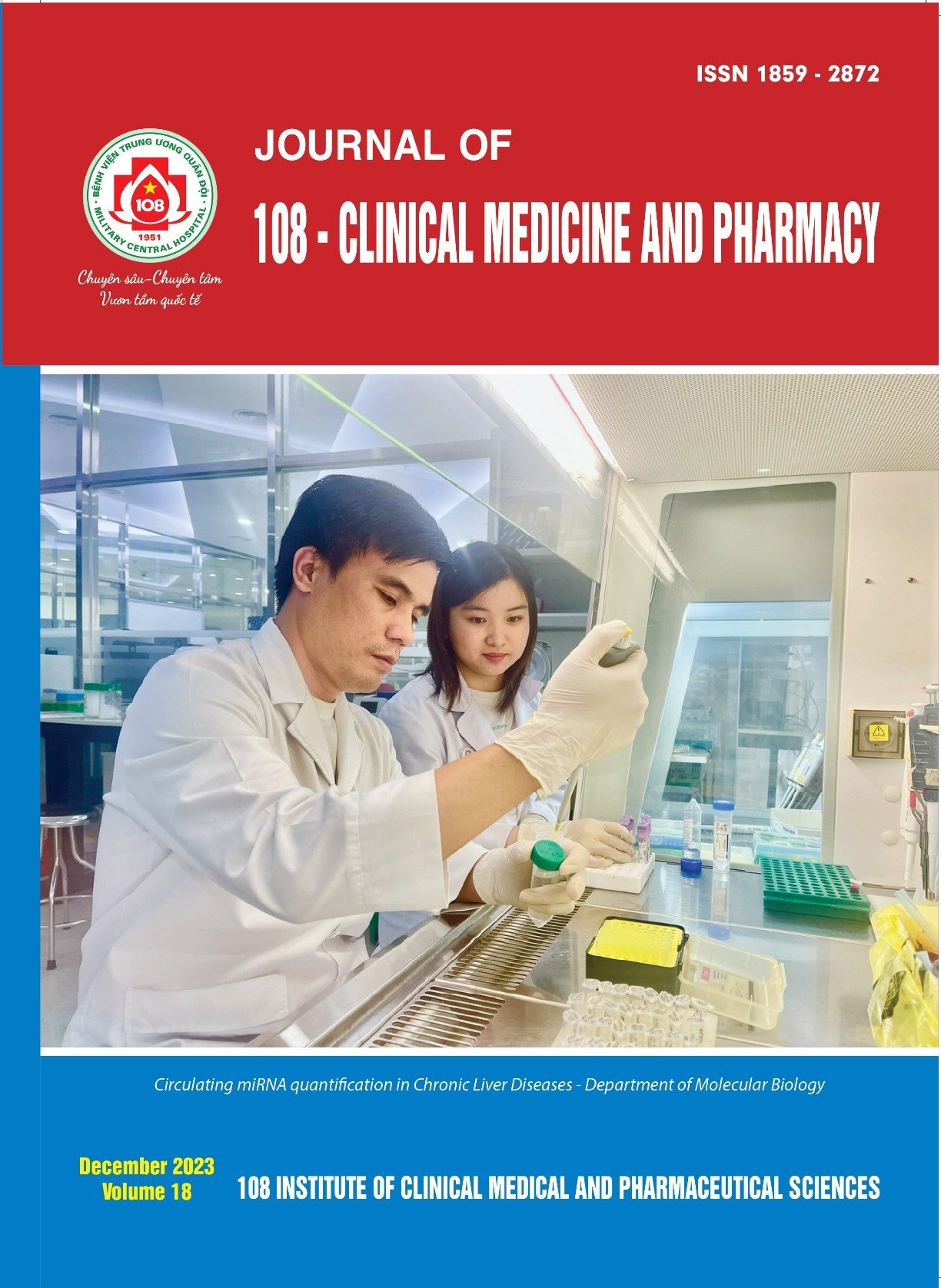Relationship between sonographic features, clinicopathological characteristics and lymph node metastasis of papillary thyroid carcinoma in children
Main Article Content
Keywords
Tóm tắt
Objective: This study aimed to evaluate the relationship between sonographic features, clinicopathological characteristics and lymph node metastasis (LNM) of papillary thyroid carcinoma (PTC) in children ( 18 years). S ≤ ubject and method: A total of 46 pediatric patients who were histopathologically diagnosed with PTC from January 2015 to March 2022 were included in this study. The preoperative ultrasonography, histological, and LNM features after surgery were retrospectively analyzed. Result: PTC in children accounted for 0.6% of all PTC, with a higher rate of females (67.4%), aged 15-18 years was 71.7%. The tumors were
mostly classic type (87.0%), tumor size > 10mm (76.1%), with high rates of central and lateral LNM (69.6% and 45.7%, respectively). Central LNM was significantly related to extrathyroidal extension (ETE). A significant relationship was observed between lateral LNM and tumor size, multifocality, ETE, intrathyroidal spread, microcalcification, and abnormal lymph nodes on ultrasound. Conclusion: Central and lateral LNM in pediatric PTC were common (69.6% and 45.7%, respectively). Several sonographic and clinicopathologic features had a significant relationship with LNM, especially lateral LNM. Patients with risk factors should undergo both clinical and neck ultrasound examinations in order to find evidence of LNM.
Article Details
Các tài liệu tham khảo
2. Francis GL, Waguespack SG, Bauer AJ et al (2015) Management guidelines for children with thyroid nodules and differentiated thyroid cancer. Thyroid 25(7): 716-759.
3. Golpanian S, Perez EA, Tashiro J, Lew JI, Sola JE, Hogan AR (2016) Pediatric papillary thyroid carcinoma: Outcomes and survival predictors in 2504 surgical patients. Pediatr Surg Int 32: 201-208.
4. Jiao WP, Zhang L et al (2017) Using ultrasonography to evaluate the relationship between capsular invasion or extracapsular extension and lymph node metastasis in papillary thyroid carcinomas. Chin Med J (Engl) 130(11): 1309-1313.
5. Jie Y, Ruan J, Cai Y, Luo M, Liu R (2023) Comparison of ultrasonography and pathology features between children and adolescents with papillary thyroid carcinoma. Heliyon 9(1): 12828.
6. Kim SY, Yun HJ, Chang H et al (2012) Aggressiveness of differentiated thyroid carcinoma in pediatric patients younger than 16 years: A propensity score-matched analysis. Front Oncol 12: 872130.
7. Ngô Quốc Duy (2022) Nghiên cứu kết quả điều trị ung thư tuyến giáp ở trẻ em. Luận án Tiến sỹ Y học, Đại học Y Hà Nội.
8. Nguyễn Thị Nhung (2018) Nghiên cứu kết quả điều trị I-131 sau phẫu thuật ung thư tuyến giáp biệt hóa ở trẻ em dưới 18 tuổi. Đề tài Khoa học và Công nghệ cấp Bệnh viện, Bệnh viện Trung ương Quân đội 108.
9. Nguyễn Văn Lộc, Trần Ngọc Lương, Phan Hoàng Hiệp (2021) Đặc điểm bệnh học và kết quả sớm phẫu thuật ung thư tuyến giáp biệt hóa ở trẻ em tại Bệnh viện Nội tiết Trung ương. Tạp chí Nhi khoa 14(4): 23-28.
10. Richman DM, Benson CB, Doubilet PM et al (2018) Thyroid nodules in pediatric patients: Sonographic characteristics and likelihood of cancer. Radiology. 288(2): 591-599.
 ISSN: 1859 - 2872
ISSN: 1859 - 2872
